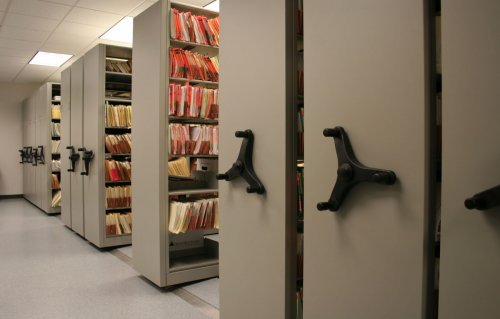One of the most essential aspects to an efficiently running office is the type of filing system you have in place. Taking the time to take control of your paperwork and develop effective file storage solutions is vital to ensure everyone within the office is able to find paperwork when they require it, as well as know where to put it when filing it away.

#1 Choose a Filing/Storage System
Whether you opt for shelving units, filing cabinets or some combination thereof, you can organize paperwork by category, subject, account number, or account name. Just make sure the system is going to make sense to everyone.
#2 Get Colorful
Use different colored folders along with the end tab coding filing system you implement. For instance, if you are filing alphabetically by client or account name, in addition to the labels, also use one color file for “A,” another color for “B,” and so on. You can repeat colors if needed, but make sure to follow the same pattern. This can be applied to a numeric filing system as well.
#3 Invest in High Quality Filing/Storage Solutions

When selecting shelving, you want units that will last and be able to support the weight of the paperwork you put into or on them. For heavily loaded shelves, try adding shelf reinforcements to take the extra weight. For efficiency in processing documents, add a pullout reference shelf to the shelving unit, so you can work with files right there without having to transport files to your desk.
#4 Only Keep Current Files in Your Desk Drawer
Make it a habit to archive away older files and paperwork on a regular basis. Deferring back to Step #2, you can further colorize your files by using different colored folders within each main folder for every month of the year and moving the previous months’ folders to a separate storage/filing system.
#5 Be Consistent with File Labeling
Do research first on what sort of file label system will work best for your office. Consult the people that will be using the system and get their input. If you choose one method but later decide this is not working well, it can be expensive and time consuming to change hundreds of labeled files.

#6 Include the Main File Label on Subcategory Files
If you are breaking paperwork down by month or other subcategories, remember to include the main file name on any subcategory files. Otherwise, it is easy to make filing mistakes and misplace paperwork.
#7 Schedule 15-20 Minutes Each Day for Filing
If you do not set aside time to file paperwork away, it can quickly fill up your inbox and overrun your entire desk. Allow about 15 minutes each day, either at the start or end of your shift to file away paperwork you are done with and no longer require.
For further suggestions and expert advice on developing an effective file storage solution for your paperwork, contact us today to speak with one of our helpful representatives.
